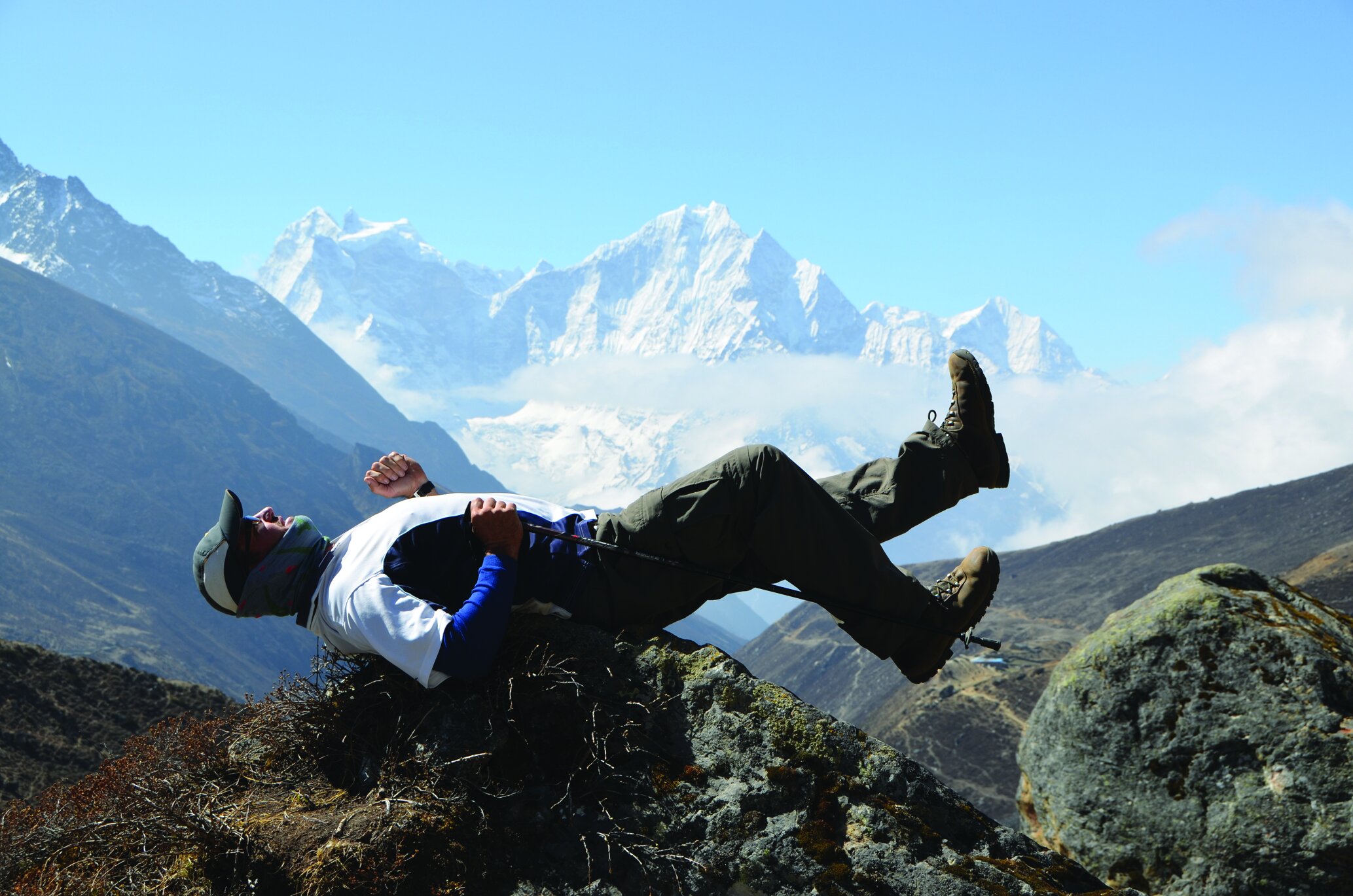John Reid Walking the Solar System 2015 Belconnen Arts Centre ACT
Walking the Solar System
Content last added 27 May 2024
Overview ‘Walking the Solar System’ is the title attributed to visual artwork conceived by Australian artist John Reid. Initiated in 2000, the artwork has been regularly developed since 2011 and consists of an open-ended series of artist performances for live events, photographic documentation and related creative texts. In simplest terms, it is an artistic gesture intended to bring to mind the vast expanse of the Universe and how precious Earth is within the Solar System.
The performance consists of a Solar walk – assuming a walking posture at odds with gravity and aesthetically composed in an inspirational location giving the impression of striding into space. The Solar walker traverses the Solar System at approximately 1,800 km per minute relative to the Sun. The Solar walk concludes when the Earth’s gravity collapses the walking pose. The walk is documented with video and still cameras for subsequent gallery exhibition, printed documents and web posting. Creative writing relating to exhibited imagery is published electronically and as take-away documents from the gallery. [See the Page, ‘Gallery Take-Away Documents’, on this web site]. Some of these documents also outline: how to safely undertake a Solar System walk; its purpose; its contextual scientific references; and, on various occasions, invites participation in a community ‘Walk-Out’ as a form of political protest.
The primary intention of the artwork is to deliver a scientifically informed aesthetic statement as a catalysts for deep and recurring reflection about Earth as the only known planet capable of sustaining our humanity and the implications this has for how we influence the planet’s life sustaining ecosystems.
A secondary intention is to encourage people to take a Solar walk as a means of appreciating the vast expanse of the Universe through a personal, aesthetic and introspective experience. To maintain the Solar System walking pose for one minute, the casual Solar walker must first overcome a level of physical difficulty in order to consciously concentrate on travelling at approximately 1,800 km per minute relative to the Sun. Although the Solar walk is a confirming gesture of Solurban Citizenship, it is a cultural reaffirmation that planet Earth is a life-sustaining enclave and ultimately precious for that reason. Its real estate value is priceless. The Solar walker always comes home.
The series, drawing on the findings of climate science, advocates social and political change through the delivery of aesthetic experience: the perception by the Solar walker of quality relationships, during the walk itself and via its documentation; and, between the walker’s body and the landscape which is intended to excite the intellect through an emotive pitch to the eye. The most recent Solar System walks have involved community participation in the form of a ‘Walk-Out’ to condemn Australian State and Federal Governments for the accelerated mining of coal and the abysmal levels of funding for alternative energy research – all of which have adverse implications for the Earth’s climate, its bio-diverse ecosystems and for the survival of the human species. Recently, billions of lives were lost in SE Australia to the wildfires of 2019-20. They were sacrificed as a result of the greed and incompetence of the country’s political leadership and the humans who voted for them. The Solurban community (if one may write on their behalf) are no doubt relieved that the Morrison Government has been convincingly removed from office and replaced by a federal parliament with potential to accelerate the reduction of human induced greenhouse gas emissions.
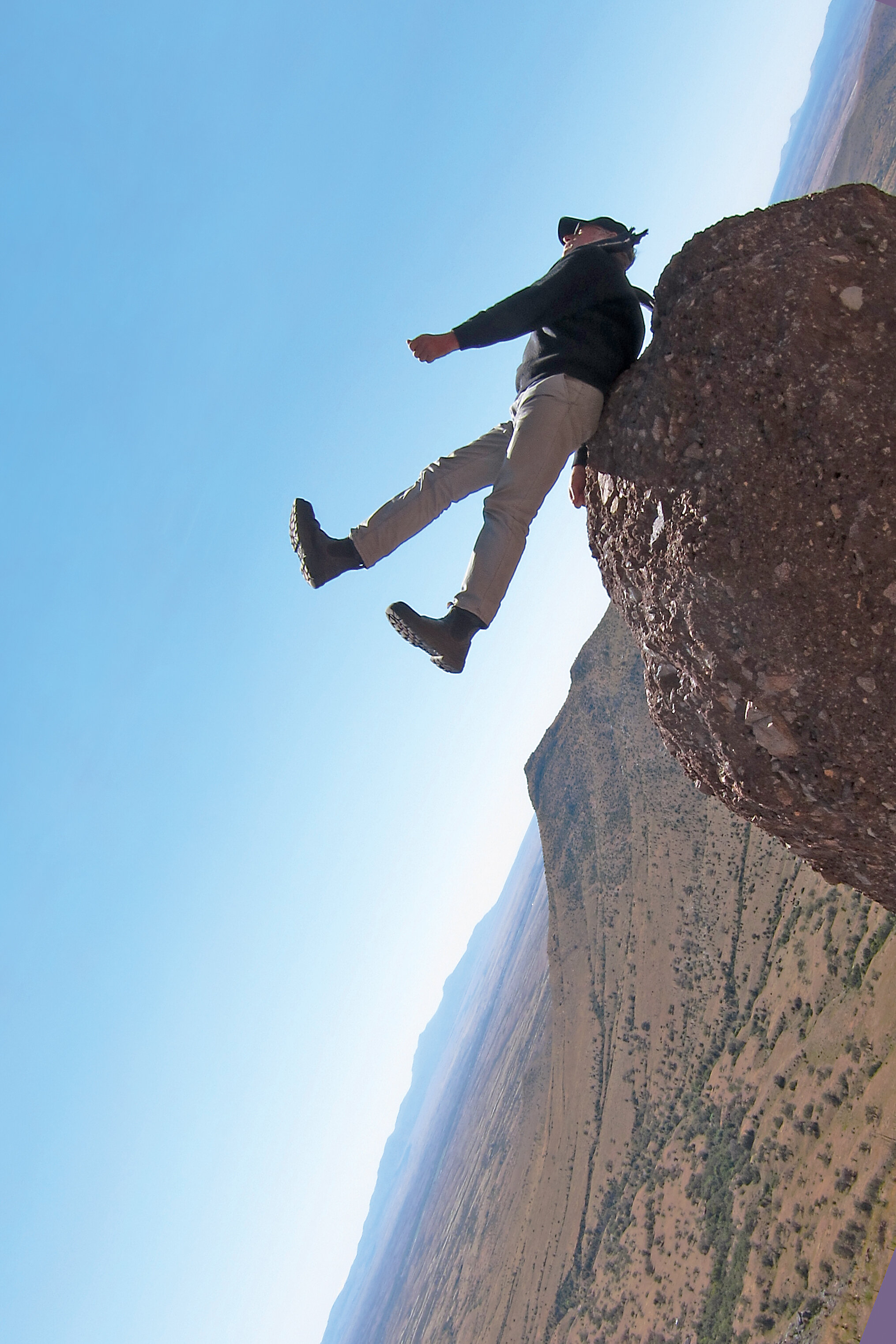

Above left: John Reid Walking the Solar System, USA | Mexico. 2011. Above right: John Reid Walking the Solar System, Santa Anna Ranges. USA. 2015.
Below: John Reid. Walking the Solar System. Hooker Valley looking toward Aoraki / Mt Cook, New Zealand. 21.17 hrs, 5 September, 2016.
Solar Walk advisors and camera operators: Marzena Wasikowska and Yoshimi Hayashi

Although I have lived in Australia all my life it took a geomorphologist to draw my attention to the fact that Australia is “a clapped-out country” - worn down to the knuckles so to speak. This makes Walking the Solar System with real flare that much more difficult. As a consequence I did everything to offset my guilt and seized the opportunity to fly to New Zealand. Solar System Walking has not yet achieved prominence as a tourist draw card anywhere in the world, but when it does New Zealand will be up there with the best countries from which to do it. Land masses that thrust out into space are always within reach to give the Solar System Walker a breath taking sense of scale. There is nothing finer than being amongst mountain peaks (if not upon them) to experience the thrill of travelling through the Solar System on the back of the Earth at 1,800 km per minute relative to the Sun.
Walking the Solar System: Walk-Out and Walking Guide
2015
Walking the Solar System: Selected Documentations
John Reid Walking the Solar System. Lake Ginninderra ACT. ‘Imaginarium’ exhibition / Belconnen Arts Centre, 2015. A one-minute Walk-Out by 32 exhibition patrons to protest the mining of coal at Maules Creek NSW. Photograph: Marzena Wasikowska
John Reid Walking the Solar System. 2015 Australian Ceramic Triennale. Australian National University, Canberra ACT. Australia. 2015
Above: One hundred and fifty delegates from the 2015 Australian Ceramics Triennale gathered on the Chifley Lawn, Australian National University, to ‘Walk the Solar System’. The Solar Walkers strode into the Solar System for a one minute 1,800 km walk relative to the Sun to contemplate the vast expanse of the Universe and to appreciate the life sustaining attributes of planet Earth. Visual artists John Reid, from the ANU School of Art Environment Studio and presenter at the Triennale, organised the Solar Walk. “Together we confirmed our Solurban citizenship and returned from the walk to acknowledge the priceless real estate value of the Earth”, he said.
John Reid Walking the Solar System. Shepparton, Vic. Australia 2012
Above: John Reid Walking the Solar System with Moon in Tow. Mount Stromlo ACT. ANU Moon Week. 2019. Photography/post-production: Rob and Sandie Little, RLDI. | Body Ecology/Coach: Zsuzsi Soboslay. | Marshalls: Wally Truesdale and Giselle Nathan. | Artwork in situ: Anne Graham Walking on the moon. 2007.
At 6.40 pm, 17 July 2019, a 100 people assembled in front of Anne Graham’s moon sculpture, Mt Stromlo ACT, for a one-minute, 1,800 km, contemplative journey through our Solar neighbourhood walking on the back of planet Earth. The Solar System Walk was as part of ANU celebrations to mark the 50th anniversary of the Moon landing. With lights in outstretched hands to illuminate the strident pose characteristic of Solar Walking, the participants undertook a thin spiral journey in relation to the Sun and, for one silent minute, contemplated the vast expanse of the Universe. The communal aesthetic experience conferred upon each individual walker Solurban Citizenship Status, and with it, came acknowledgement of the priceless real estate value of our planet.
Above: John Reid Walking the Solar System. Nr. Dunedin, South Island, New Zealand. 2016
Walking the Solar System: Timeline 2000-2024

2000 Canberra School of Art ACT

2011 Kioloa NSW

2011 Haycock Point NSW

2011 Ben Boyd National Park (to be re-named) NSW

2011 Pambula Lake NSW

2011 Riverland Biosphere SA

2011 Border USA/Mexico

2011 Anza-Borrego CAL/USA
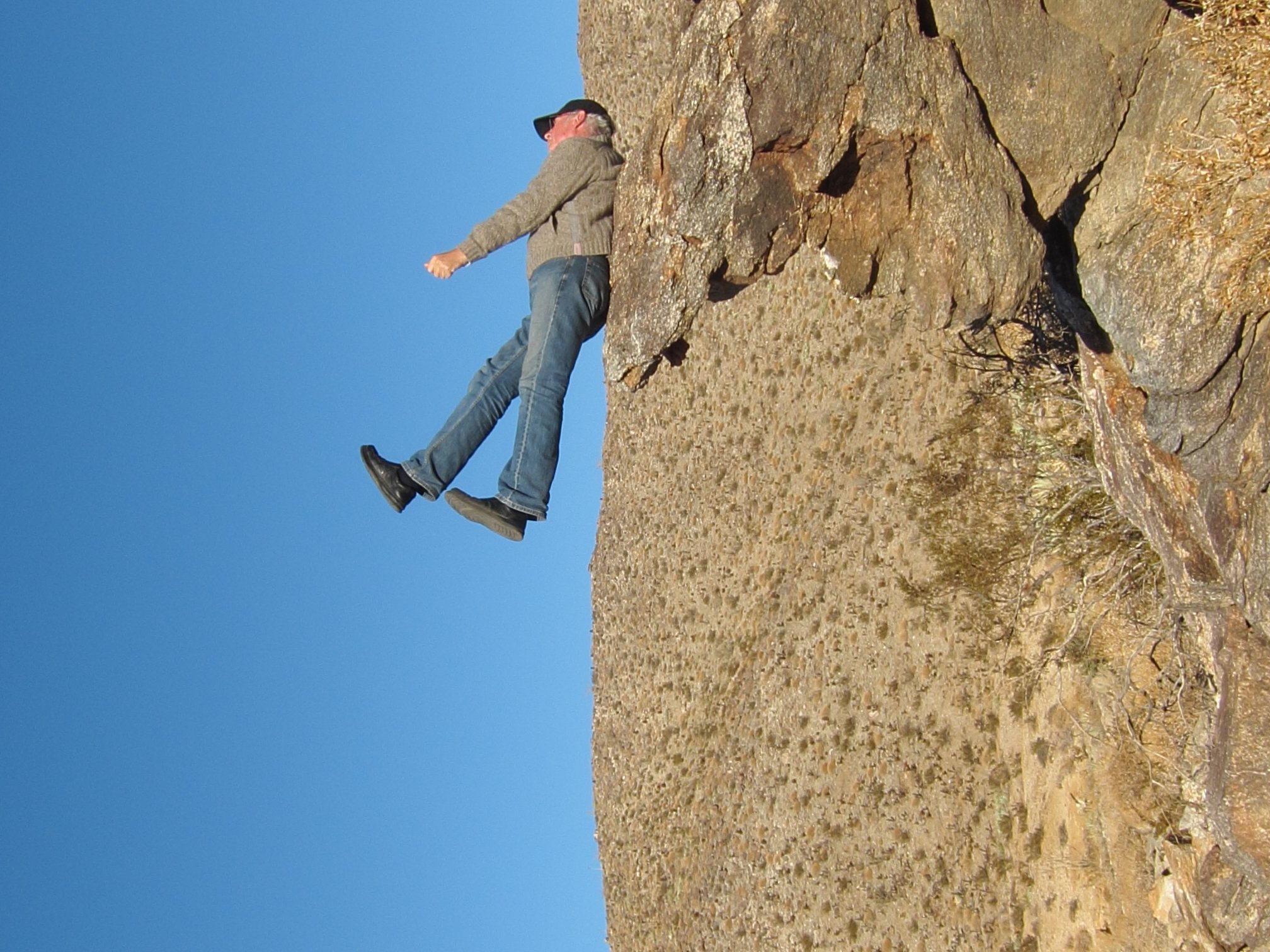
2011 Yaqui Pass CAL/USA

2011 Monument Valley AZ/USA
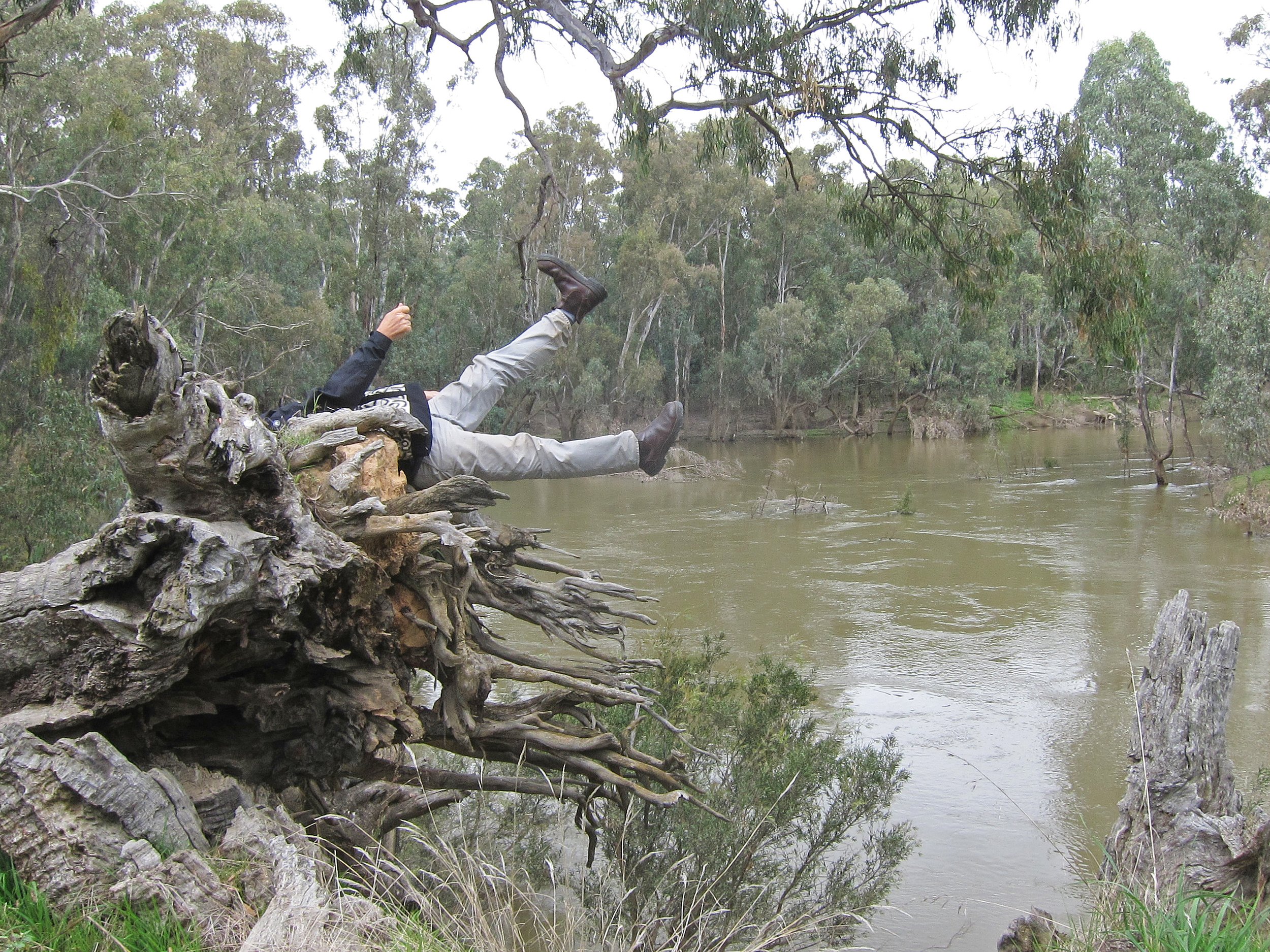
2011 Goulburn River Vic

2012 Shellharbour NSW

2012 Shepparton Vic

2012 Goulburn River Vic
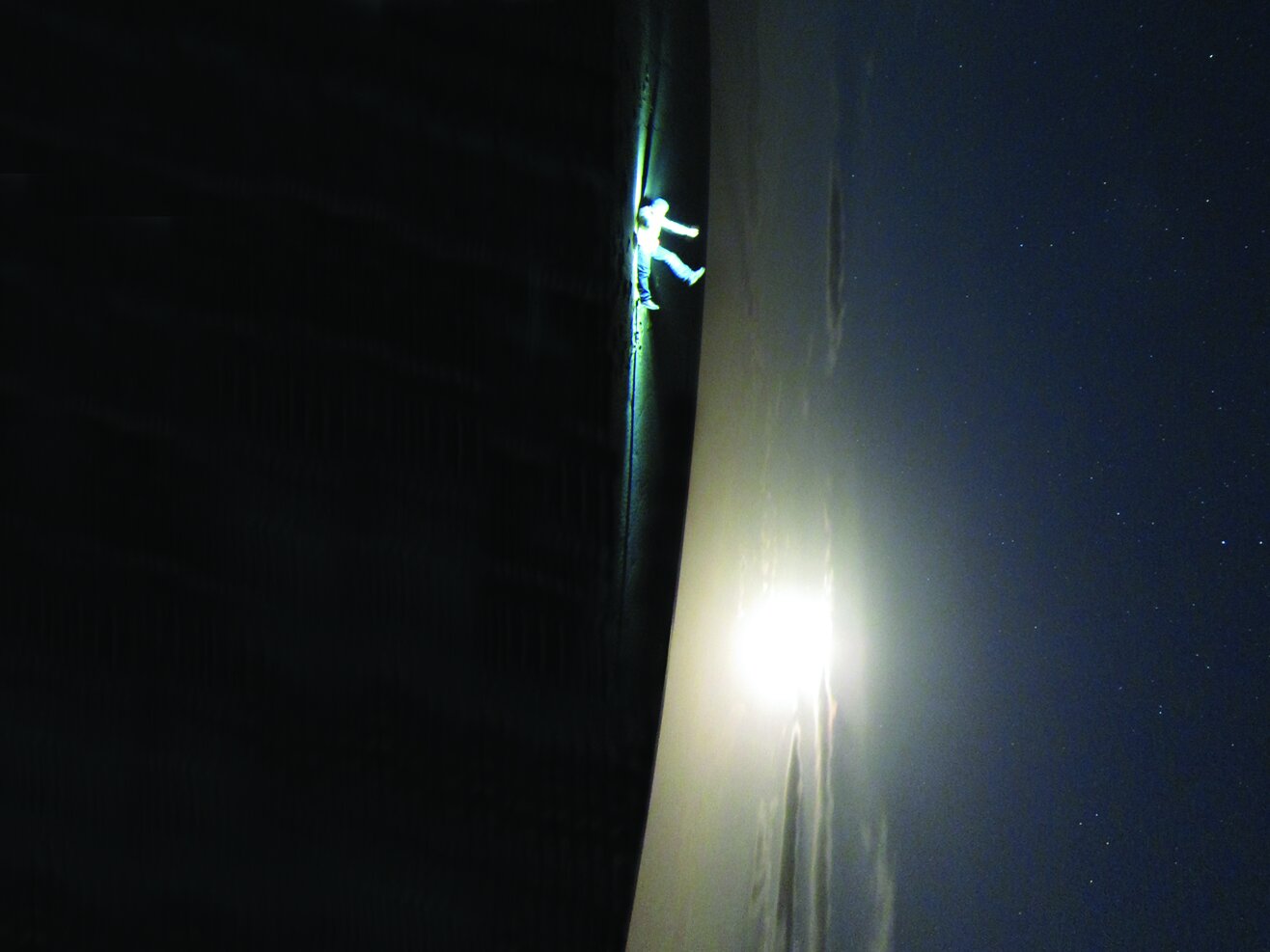
2012 Brou Lake NSW

2012 ANU Equity Presentation ANU ACT

2012 Brou Lake Eurobodalla NP NSW

2012 ANU Equity Presentation ANU ACT
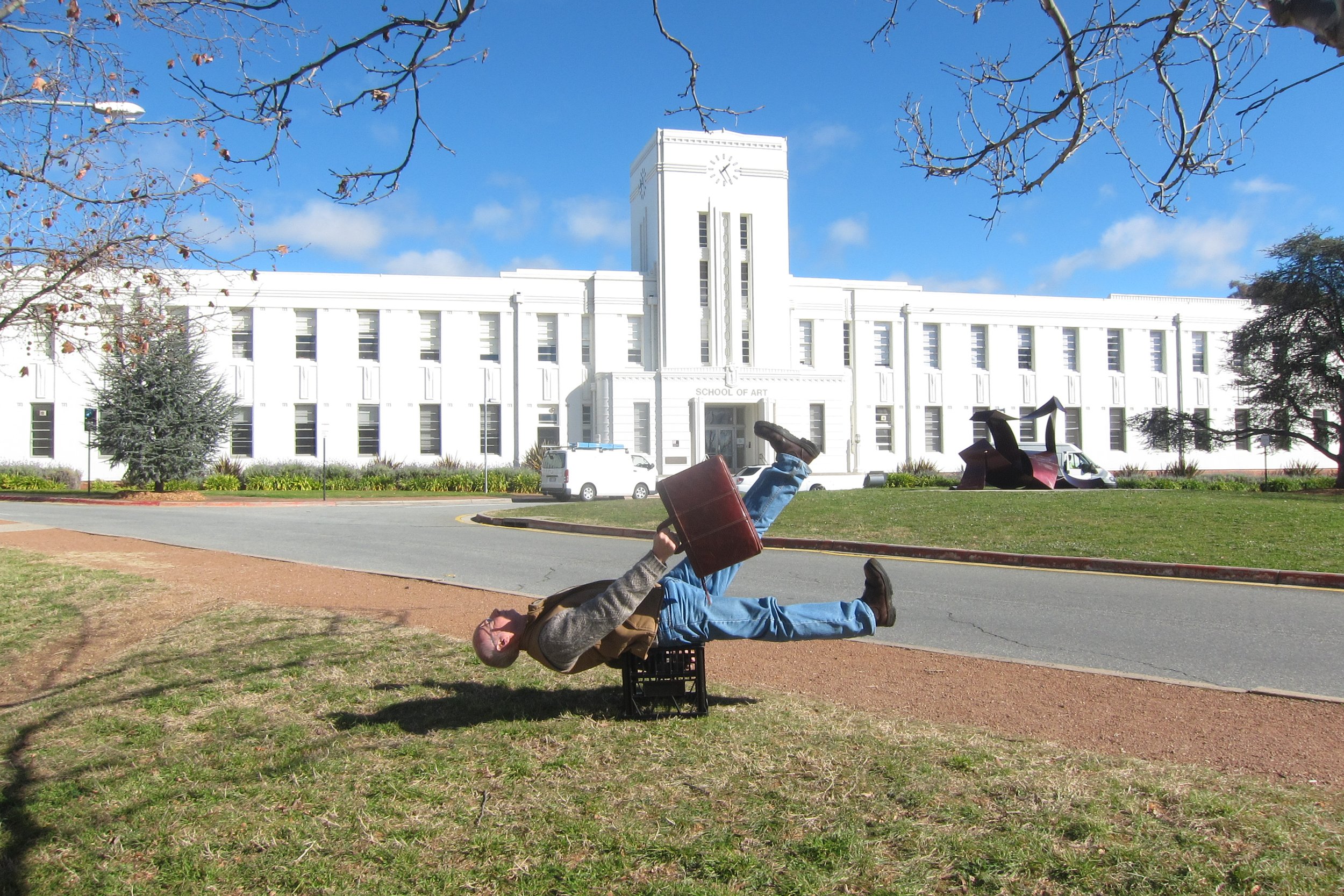
2012 ANU School of Art ACT
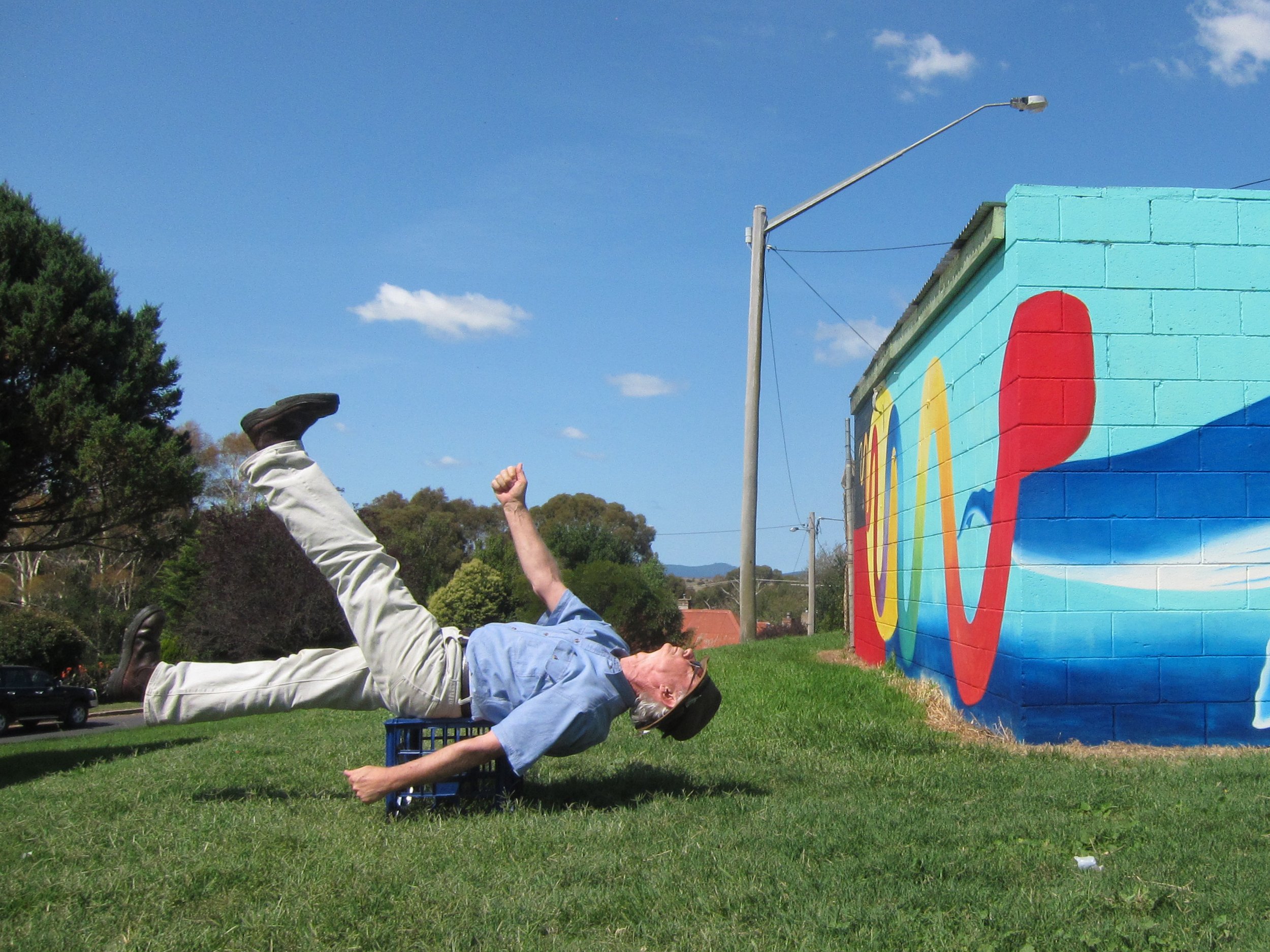
2013 Preparation for Two Fires Festival Braidwood NSW

2013 Shoalhaven River Valley NSW
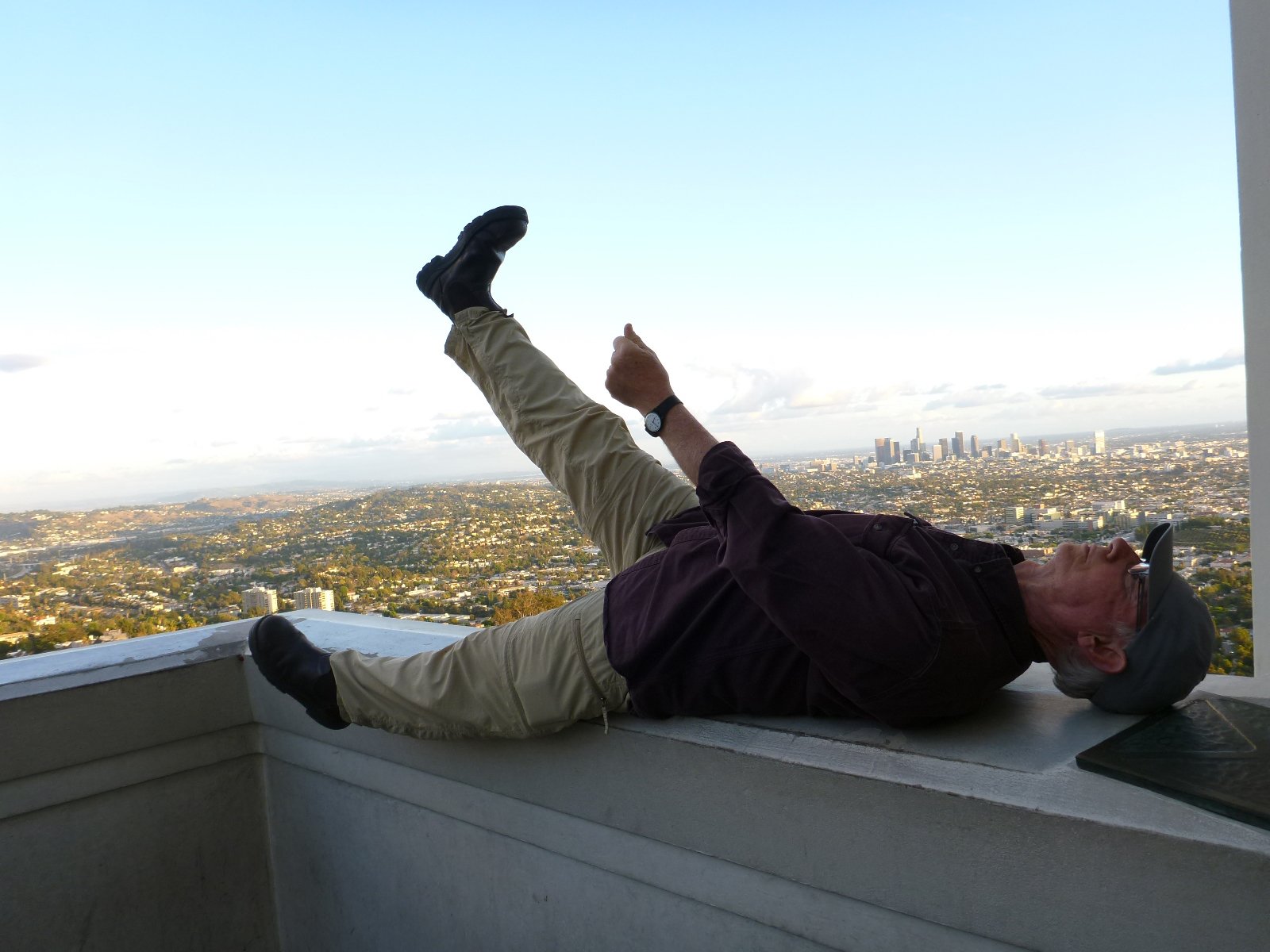
2014 Griffith Observatory Los Angeles CAL/USA
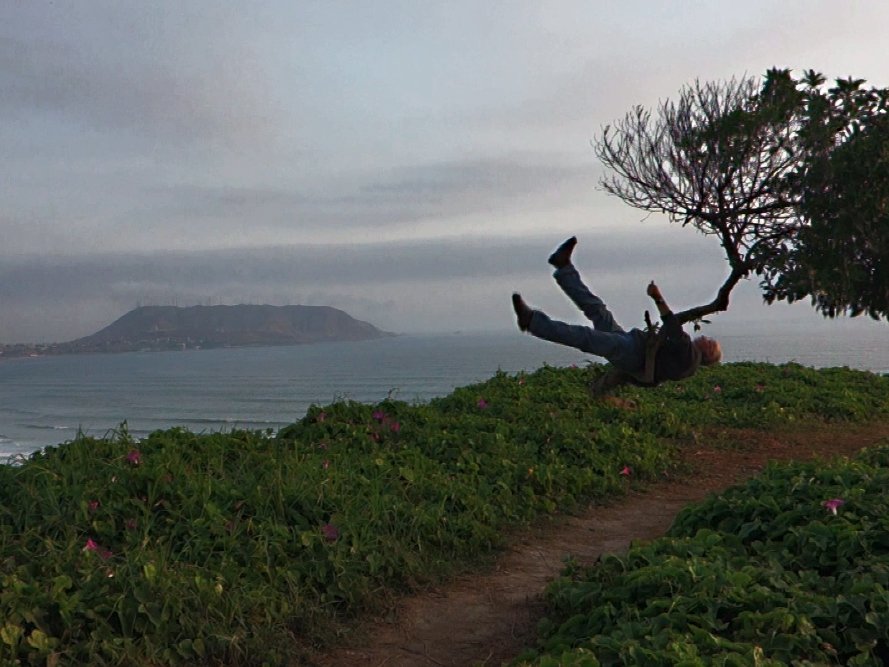
2014 Lima Peru

2014 Lima Peru

2014 Belconnen Arts Centre Canberra ACT
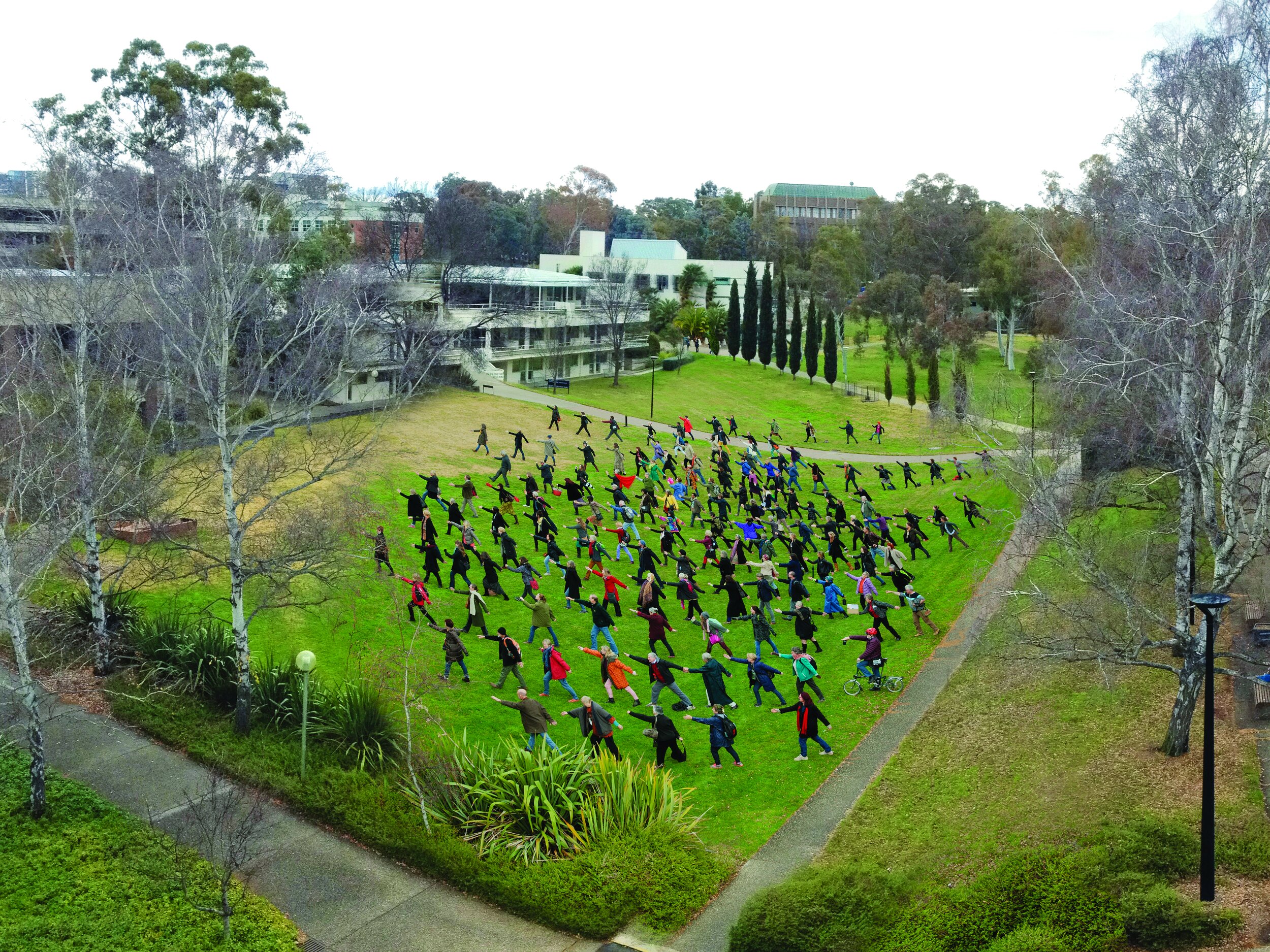
2015 National Ceramic Triennale ANU Canberra ACT

2015 Cover, Annual Report for the 'Office of the Commissioner for Sustainability and the Environment' Black Mt Canberra ACT

2015 Kuala Lumpur Malaysia

2015 Santa Ana Mts CAL/USA

2015 West Coast nr San Diego CAL/USA

2015 COP21 Mira Costa College Karlsberg CAL/USA
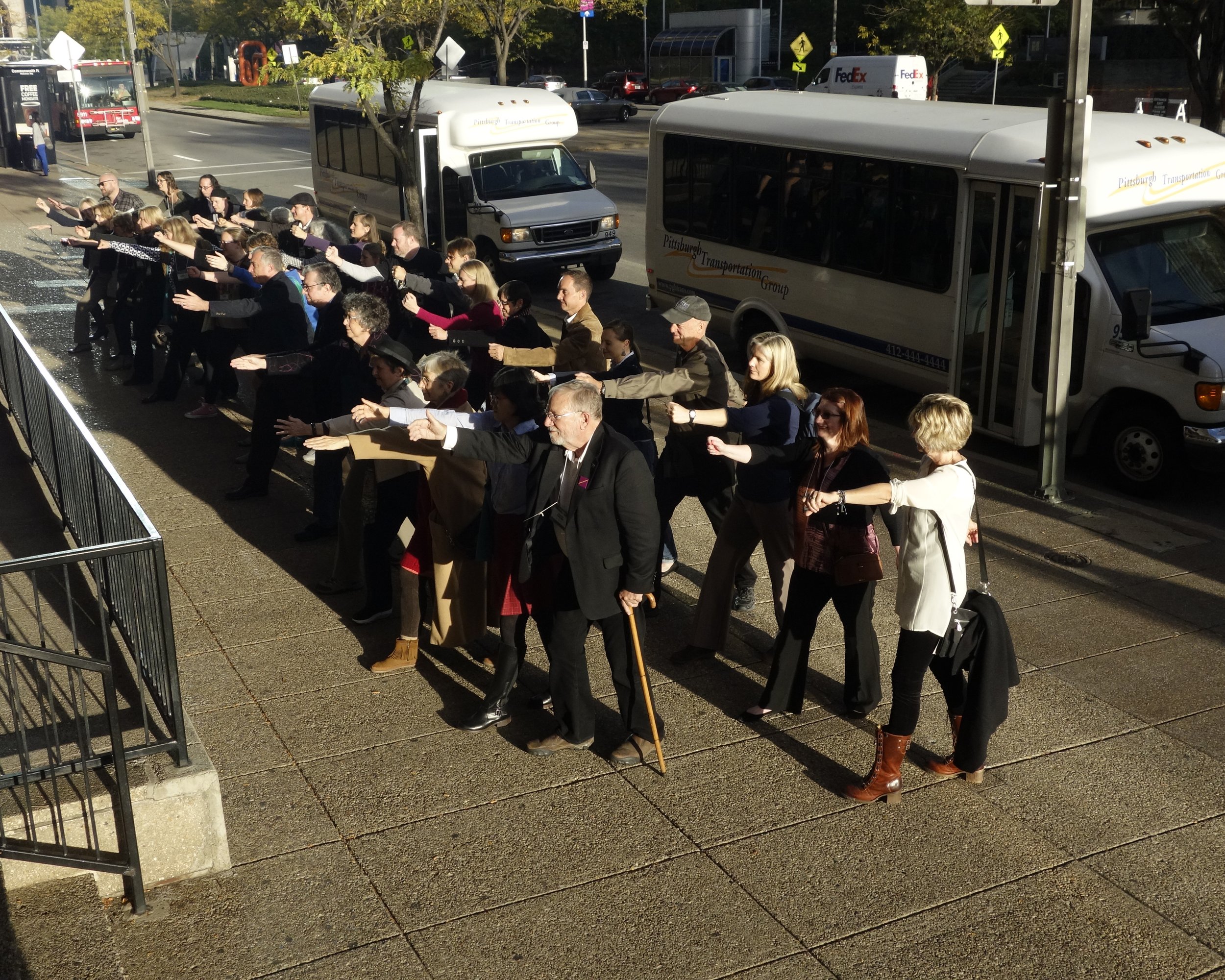
2015 COP21 Arts Conference Pittsburgh PEN/USA

2015 CoP21 Land Arts of the American West Program Albuquerque NM/USA

2015 Los Angeles Contemporary Museum of Art Los Angeles CAL/USA
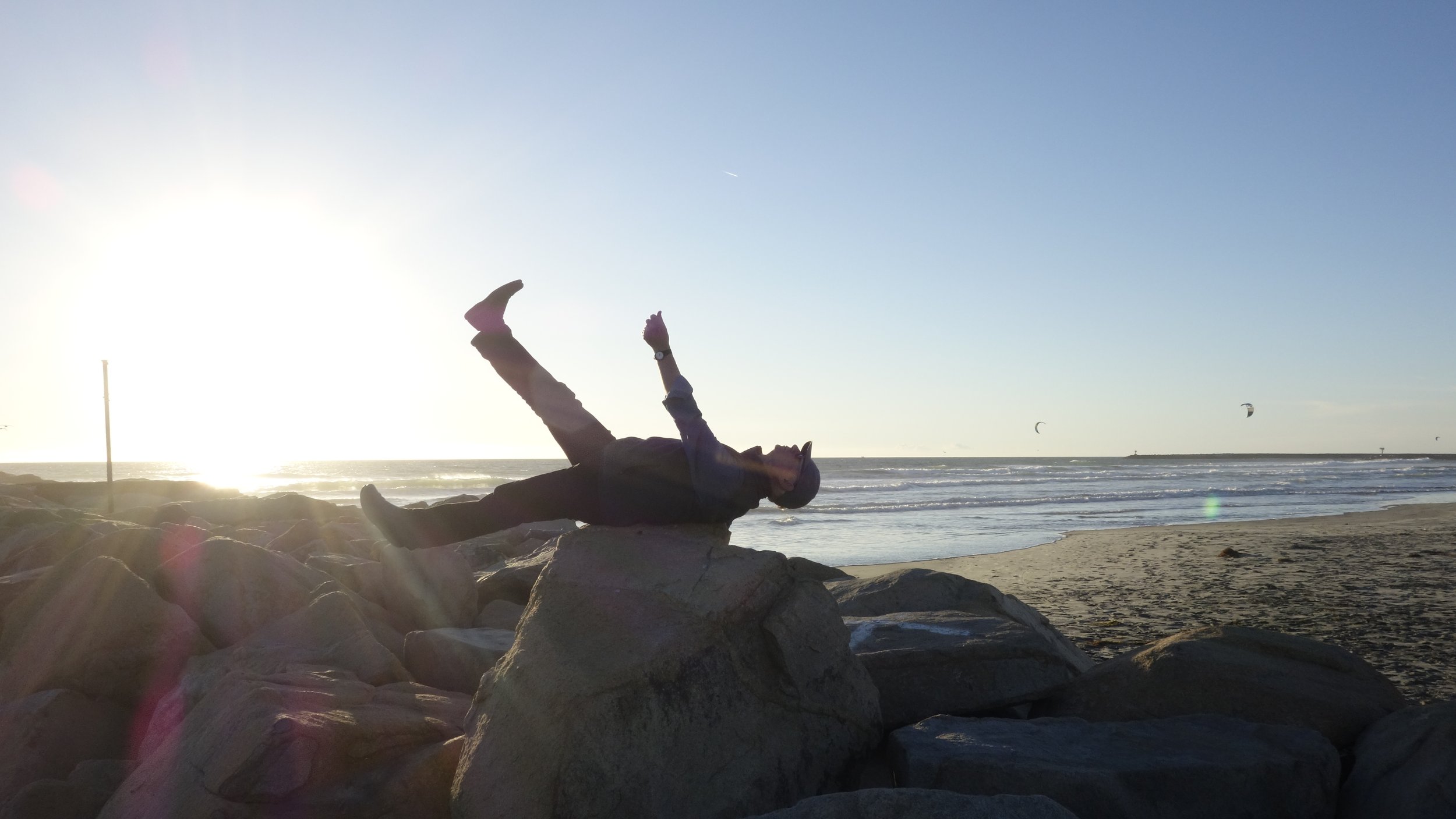
2015 Oceanside CAL/USA

2016 45 Yr 10 Art Class students, King's High School Dunedin NZ

2016 Lake Pukaki South Island NZ

2016 Aoraki (background) Mt Cook NP NZ
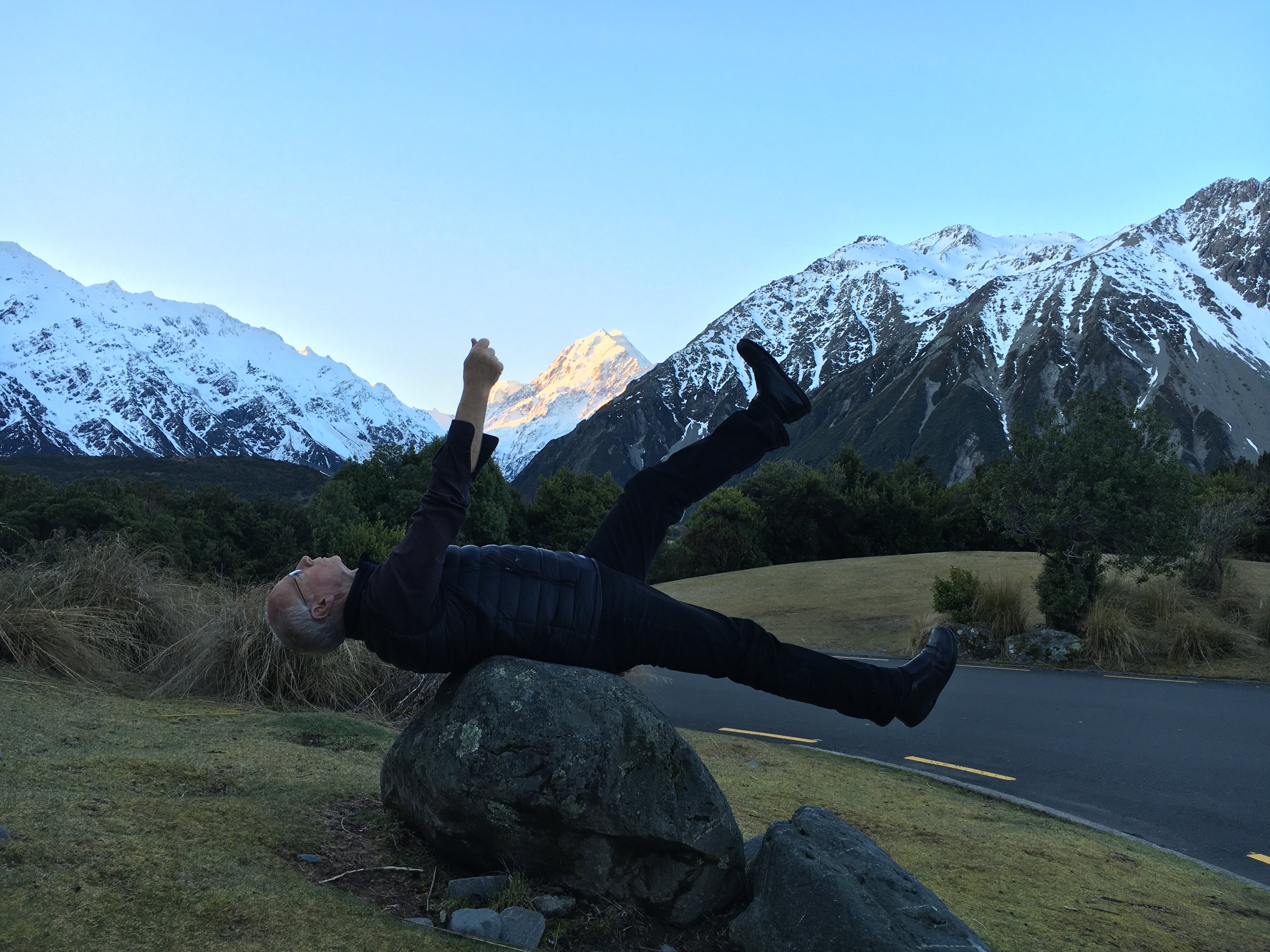
2016 Aoraki (background) Mt Cook NP NZ

2016 Aoraki (background) Mt Cook NP NZ

2016 Mt Glenmary NZ
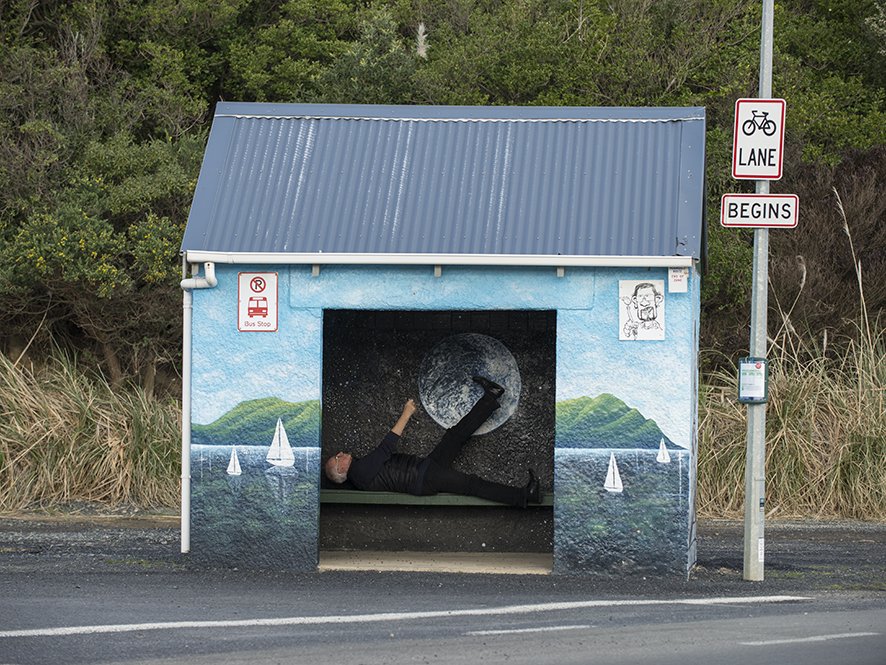
2016 Portobello Road Dunedin NZ

2016 Chrystalls Beach South Island NZ

2016 Franz Joseph Glacier NZ
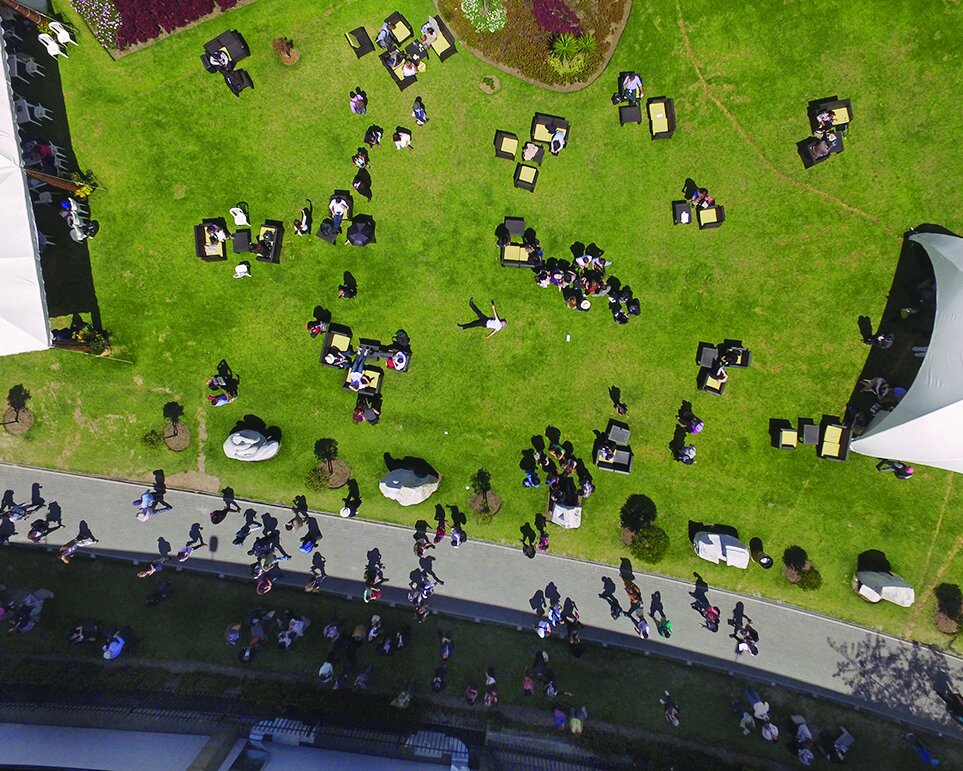
2016 UN Habitat III Quito Ecuador

2016 Quito Ecuador

2016 Exhibit Pavilion One UN Habitat III Quito Ecuador
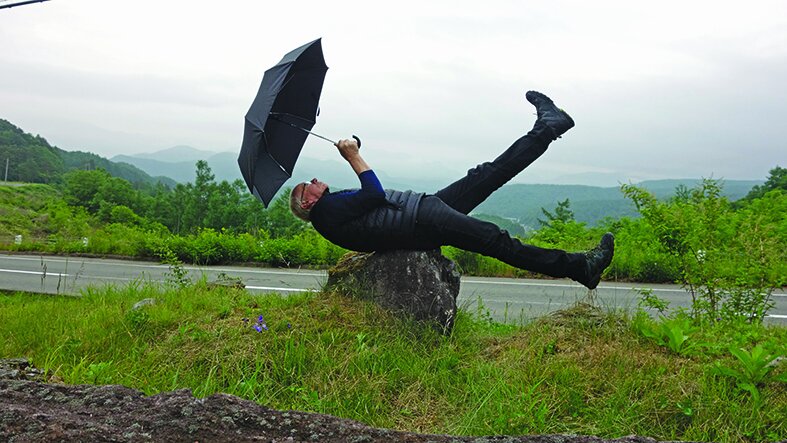
2017 Koumi Japan

2017 Rough Landing Koumi Japan
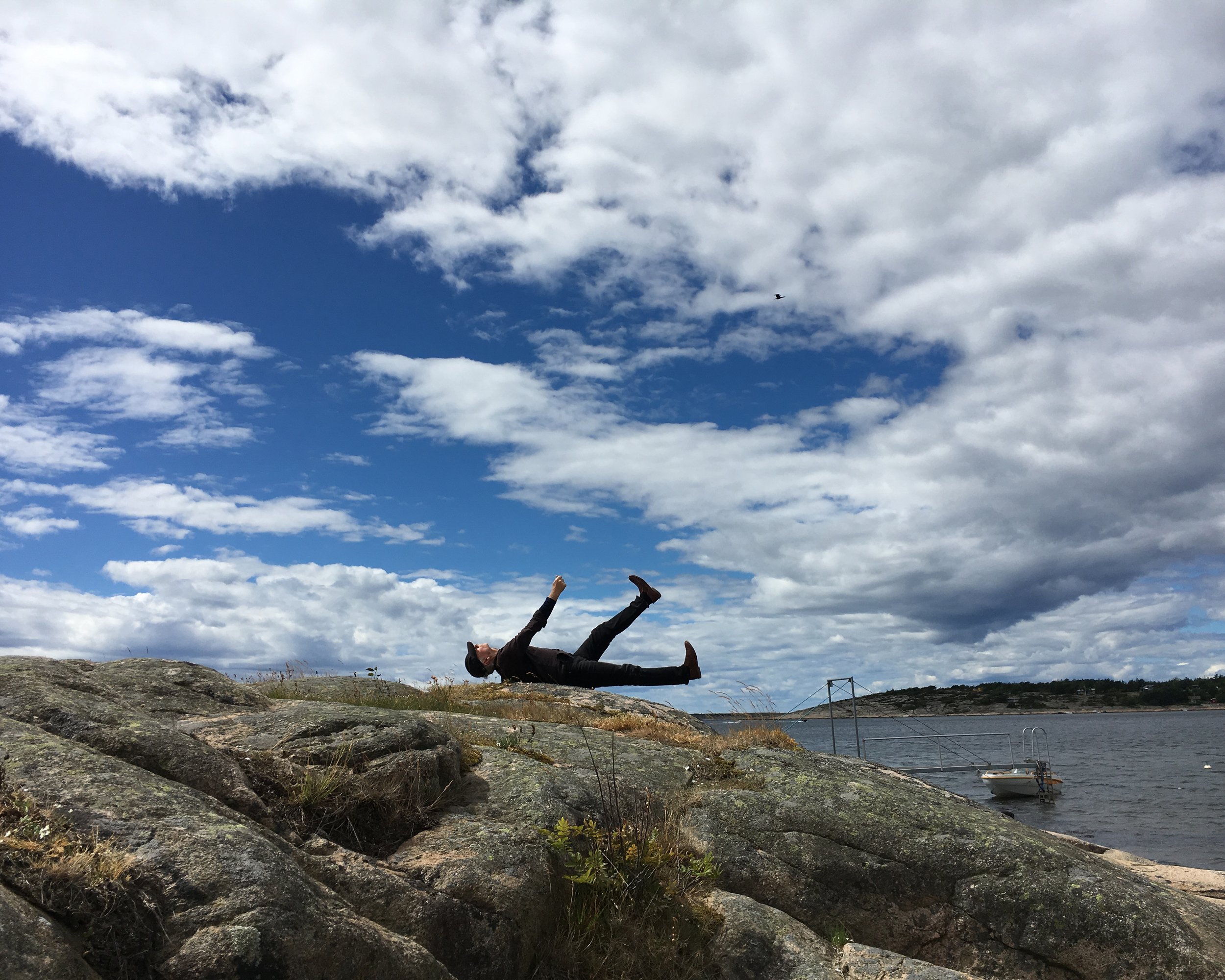
2017 Asmaloy Island Norway

2017 Asmaloy National Park Norway

2017 Gdansk Poland

2018 Narratives of Climate Change Symposium UoN Newcastle NSW
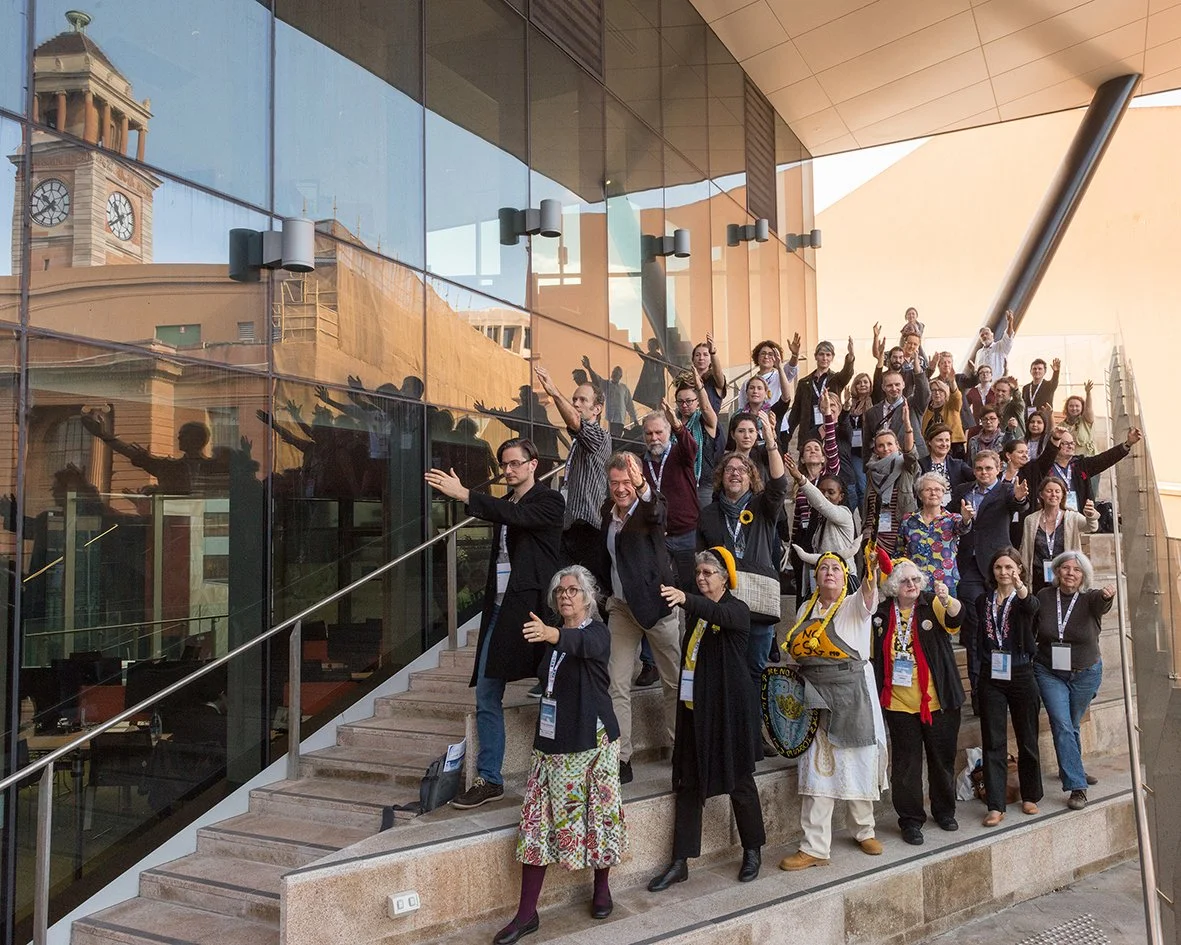
2018 Narratives of Climate Change Symposium UoN Newcastle NSW

2019 Tjeldbergtinden Peak overlooking Svolver Lofoten Archipelago Norway

2019 Tjeldbergtinden Peak Lofoten Archipelago Norway

2019 Tjeldbergtinden Peak Lofoten Archipelago Norway

2019 Road 816 Austvagoya Island Lofoten Archipelago Norway

2019 Hoven Gimsoya Island Lofoten Archipelago Norway

2019 Nipen, overlooking Henningsvær, Austvagoya Island Lofoten Archipelago Norway

2019 Kåkersundert separating the Islands of Moskenesøya and Flakstadoya Lofoten Archipelago Norway

2019 E10 Flakstadoya Island Lofoten Archipelago Norway

2019 ANU Moon Week Mt Stromlo Canberra ACT

2021 Mt Painter Canberra ACT

2021 Mt Painter Canberra ACT

2021 Mt Painter Canberra ACT
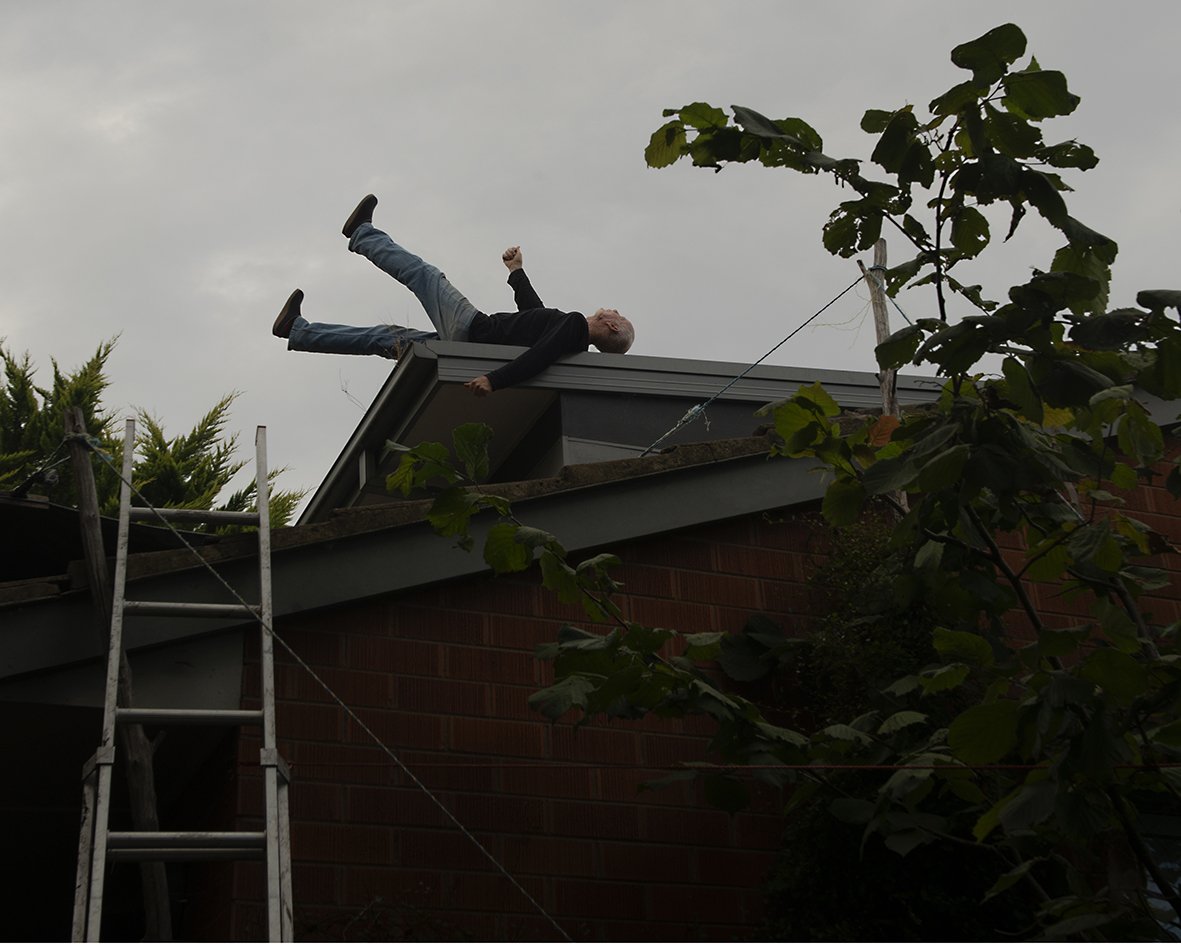
2022 Lyttleton Crescent Cook Canberra ACT

2024 Whitlam ACT
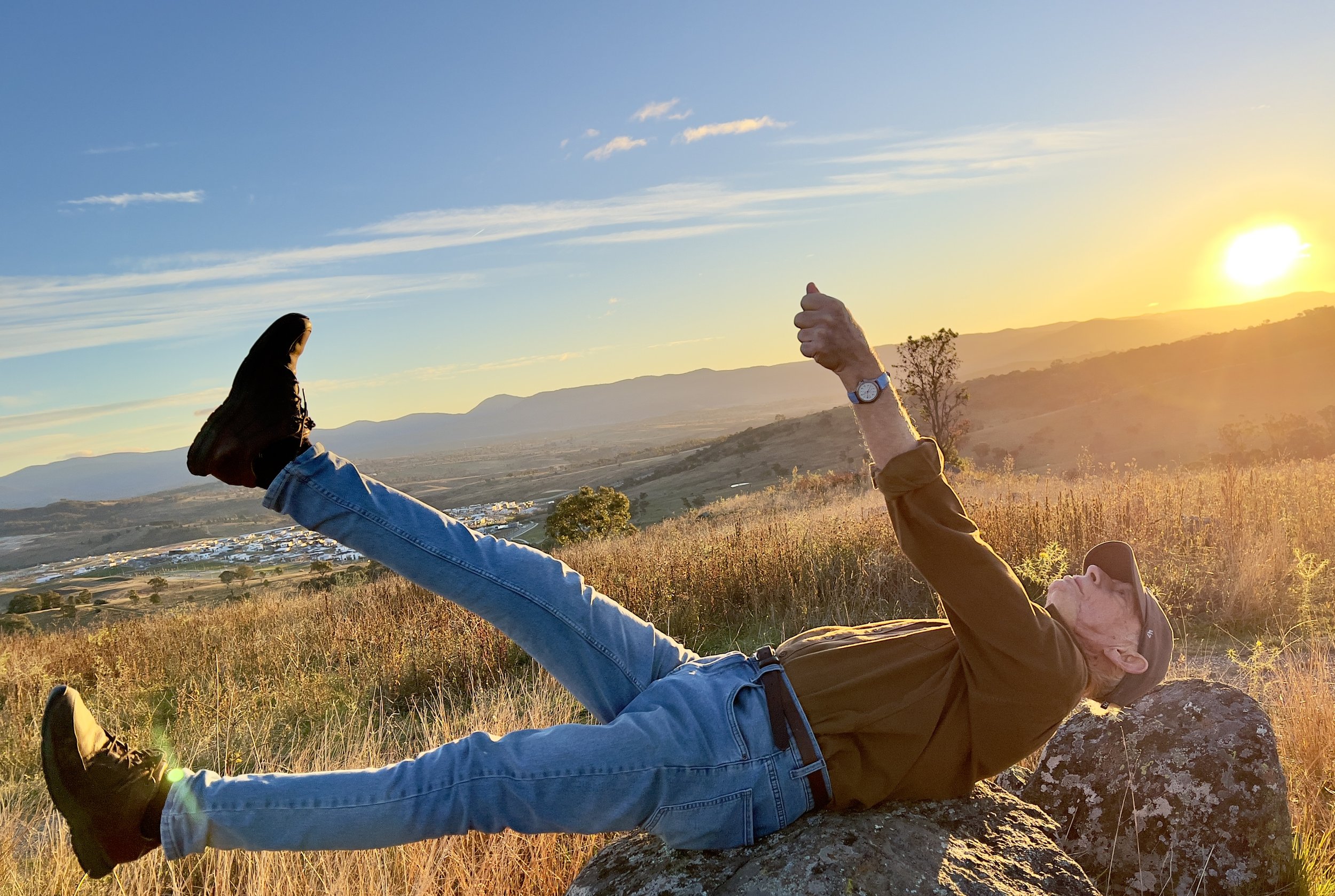
2024 Mt Painter. Whitlam ACT in background
Walking the Solar System: Timeline Notes
2000 The turn of the millennium sparked grand thoughts on several fronts. For example, what path had I taken while standing on planet Earth for the last 50 years? Had my path crossed at any point in time? What was I doing on both occasions? Would I have any premonition of having been there before? Although I had no expectation of answers to these celestial questions, I became obsessed with the trail I was blazing through space each day relative to the Sun - wandering around Canberra in the first instance then compounded by the Earth rotating about its axis and revolving about the Sun. Could that path be mapped on paper presumably using a variety of scales – the locus of my daily journey in the Solar System? I could frame it and submit the drawing for exhibition.
These elusive imaginings were first expressed visually as a performance artwork during the Australian National University’s Open Day, 2000. In a courtyard beside the Ceramics Workshop, School of Art, I presented the work, Force of Habit, to a gathering of twenty onlookers. I entered the courtyard carrying a briefcase as if I was walking to work. I approached a white plinth positioned in front of a brick wall that defined the rear of the courtyard space. I mounted the plinth and, with its top nestled in the small of my back, assumed an exaggerated walking pose at odds with gravity – feet, arms and briefcase flung into the air. I held this pose for as long as I could – probably for about a minute. Gradually my muscles fatigued and my body slowly collapsed to slump over either side of the plinth. I dismounted and walked from the courtyard.
The image of my exaggerated walking pose presented on the plinth alluded to the possibility of a previous occupation of that particular point in the Solar System - possibly walking to work. What struck me as I undertook this performance was a consciousness of my presence in the Solar System. I imagined myself hurtling through space on my plinth – a Solar System traveller hiking along despite my illusory stationary pose. For my next move I imagined my body in strident walking pose suspended in front of the Capital Hill Unconformity, a stunning geological formation of exposed sedimentary strata featured on either side of Canberra’s State Circle. Wires supporting my body would allow for an extended performance – during peak hour traffic. I searched Canberra’s creative arts calendar for a suitable umbrella event.
2011 Years passed and the prospect of suspending my body at odds with gravity in front of the Capital Hill Unconformity during Canberra’s peak hour remained buried in my imagination. However, the general idea was eventually liberated from solitary confinement in 2011 when a group of five American artists arrived in Australia to observe the lie of the land, make art and checkout a program I was running at the ANU School of Art, called Field Studies, which provided academic and logistic assistance to students to make work inspired by field experiences. I had the pleasure of showing the Americans around. The convenor of the group was Professor Bill Gilbert who ran a similar field based program at the University of New Mexico called Land Arts of the American West. For his personal artwork, Bill was intent on replicating the scaled down configuration of constellations onto the landscape and documenting a walk linking each celestial coordinate outlining the shape of the constellation on the land.
His work prompted a consciousness in the group of our place in the Universe and associated discussions. For me, this revived interest in my personal trajectory in the Solar System and, with assistance from Bill, I photographically documented several works that built on my artistic efforts from a decade earlier to visually express a consciousness of moving through Universal space. The first work we did was a ninety second video performance on a rock platform jutting into the Tasman Sea at Kioloa, New South. I assumed a pose that mimicked what I might have been doing last time I was cruising the same vicinity relative to the Sun - a revolution or two ago. I imagined that I was orientated differently and walking to work with briefcase in hand. Incidentally, I had calculated that if I held my walking pose for a minute I would travel about 1,800 km through space relative to the Sun. As I struggled to attain and hold my pose I found myself reflecting on this cosmic state of affairs.
At a show and tell that evening about the day’s creative achievements I showed the group the video Bill had taken of my performance. Drawing on the ensuing discussion, I began to conceptualise my action in a slightly different way. Rather than trying to enact what I may have been doing as the revolution of the Earth around the Sun brings me back to a precinct previously occupied, I began to see a one-minute, exaggerated walking pose at odds with gravity as a ‘Solar System Walk’, making a conscious, visual reference to my continual trajectory through the Solar System courtesy of planet Earth travelling at approximately 1,800 kilometres per minute. With repeated performances over the next week I began to focus on my place in the Solar System during the one-minute action and reflect on the significance of planet Earth. Conscious of hurtling through the vast expanse of the Solar System made me realise that the Earth is precious real estate – something easily forgotten during our daily lives on land or sea. We need to become good Solurban citizens!
2011 USA Locations in the United States of America from which to ‘Walk the Solar System’ are plentiful, especially in California, Nevada, Arizona and New Mexico, for it was in these States that Marzena Wasikowska and I spent most time during our visit to the US to join the Land Arts of the American West program convened each year by Professor Bill Gilbert, Department of Art and Art History, University of New Mexico, Albuquerque, New Mexico. Each day of travel we crossed spectacular geological formations and suffered an easily acquired syndrome that Marzena identified as ‘Landscape Admiration Fatigue’. A departure point for a Solar walk must have sensory attributes that excite the intellect and elevate the spirit. Having identified a departure platform that meets these specifications, I would assume a walking posture at odds with gravity, aesthetically configure my body with its surroundings and compose my thoughts for an exercise in wonder. I would then invoke my abdominal core and brace myself for a one-minute journey - 1,800 kms in space relative to the sun. I am reminded as I walk the Solar System of the vastness of the Universe and that Earth is a precious enclave within it. While acknowledging the planet’s protection and nourishment of life, I always reaffirm my Solurban citizenship before the walk concludes. Drawing upon the experience of the Solar walk over Mexico, I was keen to walk from Monument Valley, Arizona, (in Navajo, Tsé Bii’ Ndzisgaii - ‘The Valley of the Rocks’), armed with a daring plan. My intention was to change gravational allegiance from the Earth to the Sun. In the first moment of my Solar walk I would attach to the Sun; and, as if I had cast an anchor into its fiery depths at full speed, I would be wrenched to a standstill.
Earth would slip away beneath me in a planetary manoeuvre gracefully governed by the combined effects of its axis rotation and its elliptical revolution around the Sun. The American West would contract within a single cone of 3D vision. This was the imagining that drove me to the edge of the Valley. My departure point for the Monument Valley Solar walk was a small pillow of sandstone, pictured above to the right of the ‘West Mitten’ and behind the ‘STOP’ sign – an instruction I failed to heed. This would be a walk of sheer bravado. I did not have the astronomical knowledge to undertake a proper risk assessment. All I could think about was the prospect of just one moment of success and I would be soaring, eagle-like, over shifting ground. I had no clear idea where the walk would end or how I might survive its termination in a place other than my starting point. I positioned my body for the Solar Walk. Marzena operated the camera and shouted the adjustments that I should make to one limb or the other. I obeyed as best I could. I closed my eyes and conjured the Solar System to fit inside my head. I imagined the Sun and its fierce turbulence and tentatively surrendered my body to the power of its attraction. I was taken instantly by its eternal current. Instead of rocketing into the sky (or the Earth plummeting away directly beneath me) as I had naively expected, I shot sideways like a baseball through the gap in the West Mitten. I went into orbit with my bones in tact - just. I did not melt from atmospheric friction as I traversed the troposphere, then the stratosphere. I did not burst into an array of intestinal junk in the rarefied condition of space for I had already lost my breath. There was a moment of elation. I looked back towards Earth.
The land art of the American West, beautifully articulated in a palette of oxides, dissolved into the blue marble that the planet became as I moved further away. Then I saw the moon. It was giant and growing more so. I was in line for a collision. Its pocked surface filled my vision. Each crater vying to catch me. I instinctively took the foetal position to enhance my chance of survival, which was nil. I imagined my impact crater providing entertainment at every astronomical society AGM. I flung out my arms and bit the dust. I spat like a born-again volcano. Courtesy of my peripheral vision which was working extremely well, I could see Marzena, a conquistador in the New World protecting my video camera from a small group of onlookers. I realised I was on show. I composed my self and re-established decorum as a Solar walker aligning my dusted trousers and vest. My second ascent of the sandstone outcrop behind the STOP sign was interrupted by a lady who wasn’t little, or old, but very curious as to what I was up to. Her interrogative remarks magnetised others within earshot and an audience gathered around me. Confessing that I was a visual-artist-at-work was probably a sufficient reply; but I did not stop there. I delivered a crash course in walking the Solar System that literally articulated what my captives had presumably witnessed. “The reason I’m doing it”, I explained some more (I always answer the ‘Why?’ question without being asked), “is to provoke conversations such as this one”. In a beat I put a case for leaving coal in the ground and urged everyone to unequivocally disapprove of geo-engineering responses to climate change. At that point my audience became a forum and we got down to business.
2012-2015 A photograph of the spherical beach stone reappeared on my computer screen as I reflected upon previous Solar Walks in preparation for an exhibition in early 2015 curated by Amanda Stuart at the Belconnen Arts Centre called Imaginarium. Comfortably seated in my studio, I was reminded that the wonders of the Solar System are not only ‘out there’ beyond the Earth but also deep within it - even within a humble stone. It was a timely reminder. In summary, the prevailing circumstances were such: • the reflective peacefulness of a studio hidden in suburbia; • a review of a Solar Walk on the moonlit beach at Brou Lake in 2012; • the rediscovery of the snap-shot a the curious, spherical niggling stone; • the conscious realisation that the Solar System embraces the Earth to its core; • and the invocation to walk the Solar System for Amanda’s exhibition. The next Solar Walk must deliver a perspective of the Earth to fire the imagination. Might a perambulating Solurban citizen peer down the throat of a volcano, for example, to gain insight into the planet’s internal condition? To do this particular Solar Walk I would invoke a technique last used, admittedly with near disastrous results, in a walk from Monument Valley, Arizona, USA, in 2011.
In the first moments of the Imaginarium Solar Walk I will transfer my gravitational allegiance to the Sun and succumb like a smitten disciple to its greater heavenly body. The Earth will slip away beneath me. Travelling now at 1,800 kms per minute relative to the Earth it will be possible for the mind’s eye to look back at the planet from an extraordinary vantage point. That’s the theory. My intention is to Solar Walk across the Earth heading a tad south of east to reach the North Island of New Zealand and the volcanic fields near Auckland; or, allowing for a margin of error, to Walk over the calderas in the Rotorua Basin. I’ll need to Walk for at least 90 seconds to get there. It will be night on arrival. All I require is one, restless, dilating vent through which to glimpse the mantle of our planet glowing like the eye of a tiger. ‘Tyger Tyger, burning bright’. Recalling William Blake’s poem bristled my skin. I moved quickly to ensure the Solar Walk would be perfectly timed. I borrowed a plynth from the School of Art. I set-up a launch pad beside the Belconnen Arts Centre. Responding to the curatorial theme, I changed my mind into that of a Solurban citizen - a creature of the Solar System: part Earthling – part Cosmopolitan. I launched my adventure.
There was, as in 2011, instant chaos in terms of my plan. I went west instead of east. A consequence of my navigational incompetence. In an awkward attempt to abort my trajectory by breaking away from the Sun’s gravitational clutches I was flung to the north. I assumed the shape of a boomerang so that I might return home. It worked. My path became elliptical. It arched back towards Canberra over Narrabri, then Boggabri and Gunnedah - towns that are hard to recognise while swishing around in the stratosphere. However the ghastly Whitehaven Coal mine, nearby at Maules Creek, confirmed their identity. Huge machinery was gouging into the precious Leard State Forest to exploit the Earth’s carbon-rich underbelly. An indefensible, immoral raid on Earth’s life savings. Was this to be my ‘volcano’!? My view into the Earth!? This toxic lesion of our making!? I landed in a natural depression back at Belconnen. It didn’t take long for spirits to be uplifted for I’m planning another Solar Walk as part of the Imaginarium exhibition. I would love you to join me. It’s a traditional Solar Walk to check-out the vast expanses of the Universe, to reaffirm the preciousness of Earth and, in this latter respect, to walk-out in protest at the mining of Earth for coal.
2015 Walking the Solar System for COP21 Oceanside, California / Pittsburgh, Pennsylvania / Albuquerque, New Mexico. USA. October 2015. Artists in Oceanside, California; art conference delegates in Pittsburgh, Pennsylvania; and artists and gallery patrons in Albuquerque, New Mexico, walked the Solar System with visiting Australian artist John Reid during October, 2015, to send visual messages of aspiration and hope to the 2015 Paris Climate Conference urging it to take effective action on global warming. Walking the Solar System is an exercise in imagination that highlights our physical immersion in the vast expanse of space.
The Solar walkers for COP21 adopted a strident walking pose for one, silent, still, contemplative minute to traverse the Solar System together covering more than a thousand miles (approx 1,800 km) relative to the Sun. No one got lost. Everyone returned from the Solar walk as a confirmed Solurban citizen convinced of the priceless real estate value of our planet. “The Solar System Walk is a contemplative performance in which the Solar walker affirms the environmental health of planet Earth as essential for the preservation of our humanity”, John Reid said.
Photographs will be sent as an aesthetic visual message of aspiration and hope from the Solurban citizens of Oceanside, Pittsburgh and Albuquerque to the 2015 Paris Climate Conference via submission to the associated art and cultural program, ArtCOP21 and its web site.
2016 Walking the Solar System in New Zealand Although I have lived in Australia all my life it took a geomorphologist to draw my attention to the fact that Australia is “a clapped-out country” - worn down to the knuckles so to speak. This makes Walking the Solar System with real flare that much more difficult. As a consequence I did everything to offset my guilt and seized the opportunity to fly to New Zealand. Solar System Walking has not yet achieved prominence as a tourist draw card anywhere in the world, but when it does New Zealand will be up there with the best countries from which to do it. Land masses that thrust out into space are always within reach to give the Solar System Walker a breath taking sense of scale. There is nothing finer than being amongst mountain peaks (if not upon them) to experience the thrill of travelling through the Solar System on the back of the Earth at 1, 800 km per minute relative to the Sun. One can Walk the Solar System anytime. So can two or more. The highlight of my New Zealand adventure was a Solar System Walk in Dunedin with 45 Year 10 artists from Dunedin’s King’s High School. For the Solar System Walker, a conceptual leap, which is integral to the activity, is, well, very physical. Solo or with a group, there are two styles from which to choose - the Standard Walk and the Advanced Walk.
New Zealand presented to me a wonderful opportunity to undertake an Advanced SolarSystem Walk which involves travelling primarily under the influence of the Sun’s gravity.The first Solar Walk of this kind was in Utah,USA, at Monument Valley - Tse’Bii’Ndzisgaii in Navajo - in 2011. It turned out that I was on course to collide with the Moon. Not that I could have walked that far but I bailed out none the less. The second Walk took place in the Australian Capital Territory two years later. By making an allegiance with the Sun - requiring an enormous feat of concentration on my part - I was hoping to jettison, courtesy of the Sun’s gravity, in a low arc over New Zealand and after about 90 seconds look into the Earth’s core through volcanic wounds in the crust that are prevalent in the North Island. I went the wrong way soaring out of control into northern New South Wales. My aim on this occasion in New Zealand was to take a leap of imagination to about ten thousand metres - straight up. At that point above the Southern Alps I would desert the Earth and its powerful attraction by fixating on the Sun and watch the Earth roll away from the combined effects of its merry rotation about its axis and its resolute orbit about my new, shining star. The stroke of genius lay in the fact that I had no firm destination. I could dodge and weave at will. Nothing could go wrong. I could revel in space.
Despite this guarantee, it was undeniably scary to see one’s home leave you at 1,800 kilometres a minute. A minute was long enough to want to return to Earth. Space is not a place. Uncomfortable as it was, a large rock in the small of the back felt mighty fine.
Dunedin Cool. A lens of Solar Walkers were fully briefed on the basic techniques and rationale of Solar System Walking. They are: 1 Assume an exaggerated walking posture; 2 Close eyes and hold the walking position for one minute; 3 During the one-minute Walk, contemplate the fact that you are being propelled through space on planet Earth at 1,800 km per minute relative to the Sun; 4 Imagine the vast expanse of the Universe and appreciate the real estate value Earth; 5 Terminate the Solar Walk and adjust to local scale; 6 As a confirmed Solurban Citizen, reaffirm your responsibility to preserve life on Earth. There is no planet B. Much of the ground of King’s High School was underwater in the 2015 Dunedin floods. More than 1,000 properties were also affected by flood waters. Water levels rose from the combined effects of heavy rain, high tides and poor drainage infrastructure - a coincidence of events that foreshadow future climate change impacts on South Dunedin’s suburbs.
2019 At 6.40 pm, 17 July 2019, a 100 people assembled in front of Anne Graham’s moon sculpture, Mt Stromlo ACT, for a one-minute, 1,800 km, contemplative journey through our Solar neighbourhood riding on planet Earth. The Solar System Walk was as part of ANU celebrations to mark the 50th anniversary of the Moon landing.
With lights in outstretched hands to illuminate the strident pose characteristic of Solar Walking, the participants undertook a thin spiral journey in relation to the Sun and, for one silent minute, contemplated the vast expanse of the Universe.
The communal aesthetic experience conferred upon each individual walker Solurban Citizenship Status, and with it, came acknowledgement of the priceless real estate value of our planet.
The Solurban Citizens Club
A database of Solar Walkers who have submitted photographs of forays into the Solar System that have heightened their appreciation of planet Earth - the environments that sustain life as we know it
Solurban Citizen Truesdale
Solurban Citizen Zaraftis
Solurban Citizen Walters
Solurban Citizen Gilbert
Solurban Citizen Hayashi










